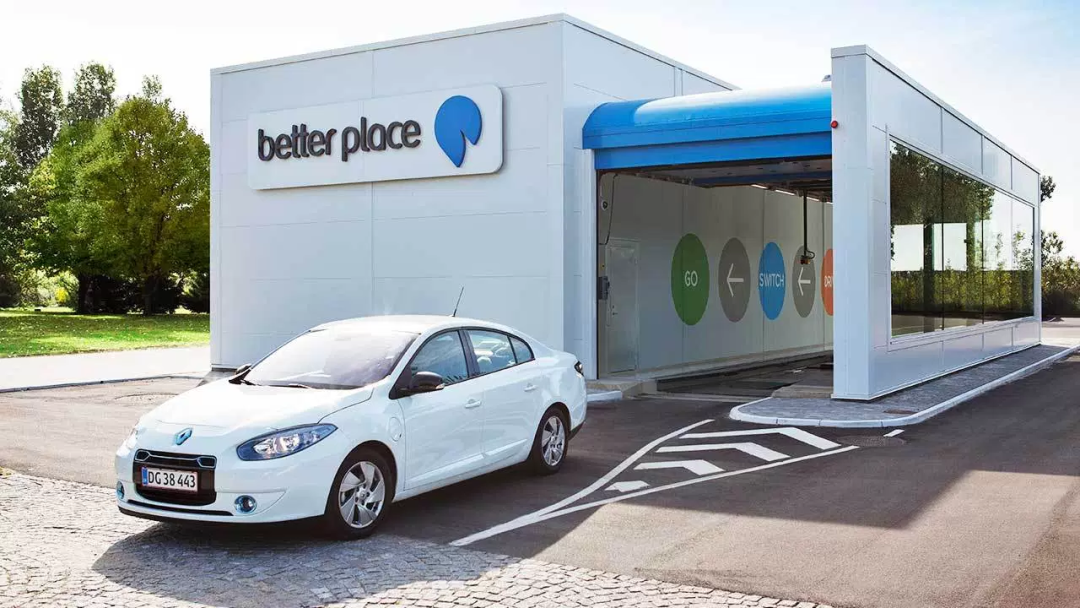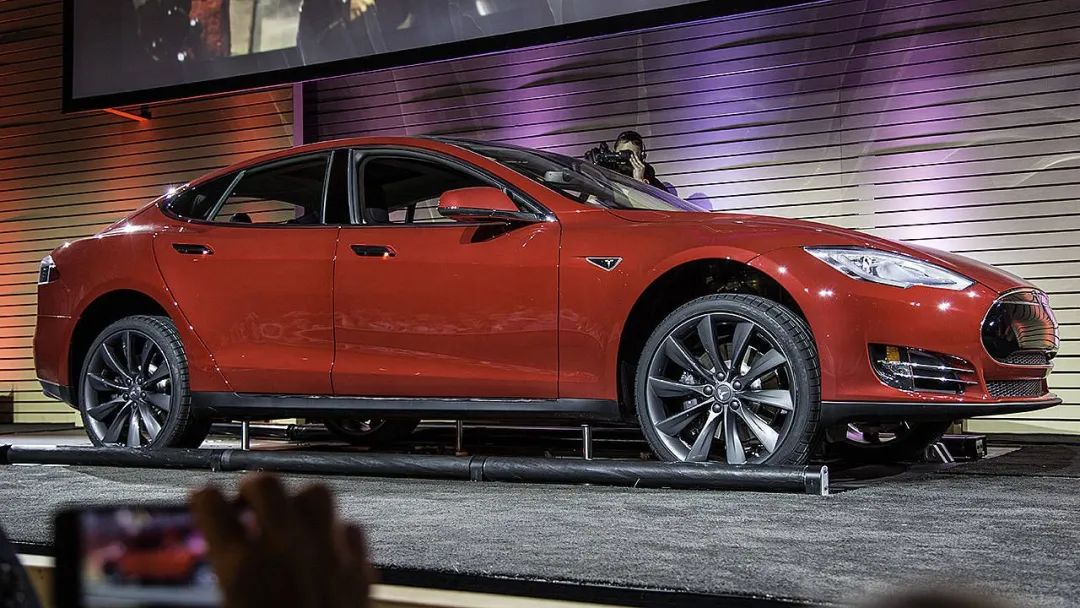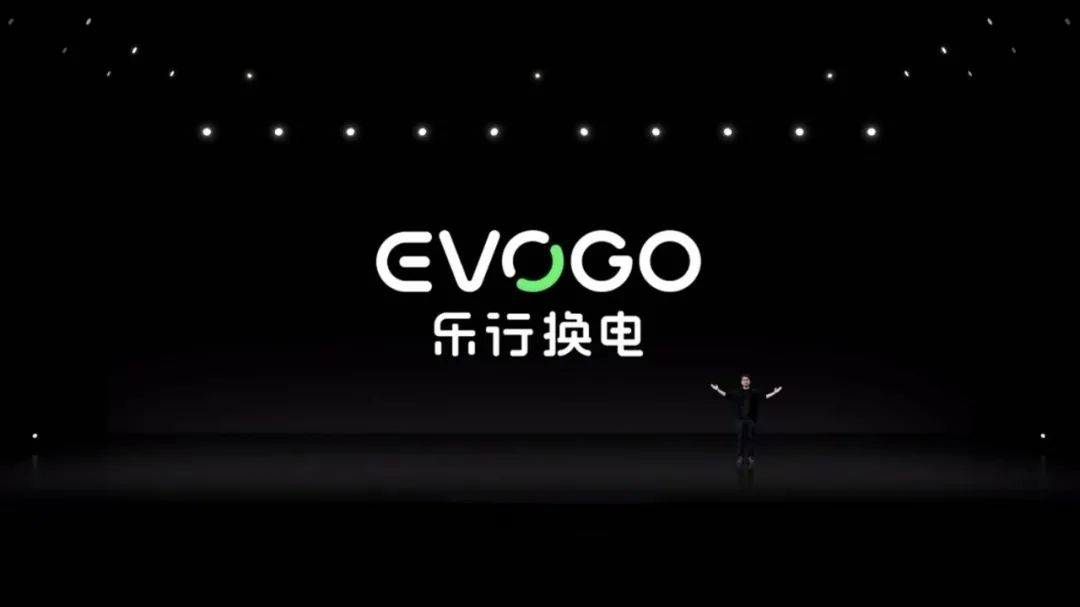Author: Little Fat Boy with Twin Turbos
Today, Eraeve hosted its first press conference online, introducing its battery-swapping service brand EVOGO, as well as its solution for modular battery-swapping.
First and foremost, who is Eraeve?
Eraeve is a wholly-owned subsidiary of CATL, dedicated to providing users with convenient and reliable mobile power solutions and services.
When it comes to CATL, I believe “DDDD,” and I won’t elaborate further.
Let’s begin with the battery-swapping mode.
In fact, when we hear the word “battery-swapping” in 2022, we don’t feel unfamiliar or novel anymore. Because in recent years, the battery-swapping mode has become a common practice.
But there is something we need to be clear about:
Battery-swapping is not unique to, nor originated from, NIO.
Indeed, with the sales of NIO ramping up in recent years, and persistent promotion of its rechargeable and interchangeable model, the battery-swapping mode is becoming increasingly well-known, while the utilization rate of battery-swapping stations is gradually increasing.

However, even before the launch of NIO’s first model – the ES8, someone had already been working on it. They were as enthusiastic about the battery-swapping mode as NIO. For example, BetterPlace, an Israeli electric vehicle charging and battery-swapping service provider, once strongly promoted its electric vehicle battery-swapping business. However, with problems of funding, operation, and profitability, the service provider declared bankruptcy in 2013.

In the same year that BetterPlace went bankrupt, Tesla also introduced the battery-swapping mode for its Model S model. The entire process from the vehicle entering the battery-swapping station to the successful swap only takes 90 seconds, which is much shorter than the time needed by NIO’s battery-swapping station today. However, the problem it brought was still “cost,” which included the construction cost of battery-swapping stations, land leasing cost, operation and maintenance cost, as well as the user’s cost of use. At that time, Tesla’s battery-swapping service cost users $60-80 per swap, and if the user wanted to keep the new battery swapped in, they had to pay the price difference between the new and old batteries.


The advantages of battery swapping for users are obvious – vehicle and battery separation can reduce the cost of purchasing a car, and, most importantly, battery swapping is more efficient than charging.
However, for automakers, the first problem encountered is the technical difficulty involved in battery swapping, which includes the liquid lock of the battery pack’s cooling and temperature control pipelines during the swapping process, as well as the reliability of the vehicle and power battery during and after the swapping process. In addition to technical difficulties, high operational costs are currently the biggest challenge facing battery swapping.

In the Chinese market, in addition to NIO, automakers that have entered the battery-swapping game include Dongfeng, Ouling, BAIC, Changan, SAIC, Geely, and more.
When Beijing’s taxi fleets began to switch to the BAIC EU5 fast-swapping version, they also started their electric taxi battery-swapping service. Geely’s Maple Leaf EV has also launched a battery-swapping service in some regions. Even the newly-revealed light orange era has signed a strategic cooperation agreement with Xinjiang Xinneng Science & Technology Co., Ltd. to explore battery swapping.

11-minute press conference: one brand, one solution
This short press conference only lasted 11 minutes. During the conference, EraPassenger Electric Service (also known as Epoch EV Service) released its battery-swapping service brand EVOGO LEXING as well as its comprehensive battery-swapping solution.

Currently, the new energy vehicle industry has entered a new stage of explosive growth. As of December 2021, the retail penetration rate of new energy vehicles in the domestic automobile market has reached 22.6%, resulting in a surge in demand for power batteries and a substantial increase in raw material prices. In comparison, the cost reduction brought about by economies of scale and technological progress is just a drop in the bucket.
At the same time, most private car owners only use 10-20% of the battery capacity in their daily use scenarios, but are forced to purchase high-capacity models to alleviate anxiety about driving range and battery life. The original intention of EraPassenger Electric Service’s battery-swapping brand and solution is to address the three issues of range anxiety, charging convenience, and purchasing and usage costs at the same time.
EVOGO Lexiang Battery Swapping Solution, consisting of three major products: “Battery Swapping Block, Quick Battery Swapping Station (QBS), APP”, was launched to address the issues faced by battery-swapping. Like NIO, EVOGO Lexiang Battery Swapping adopts the mode of separating the battery from the car, making the battery an independent shared asset.

The difference is that NIO’s BaaS Battery leasing provides a choice of new battery pack capacity and upgrading of subsequent battery pack capacity, while EVOGO Lexiang Battery Swapping has launched the “Chocolate Battery Swapping Block”. It can provide one or even multiple battery packs for replacement. Users can choose the number of battery packs according to their needs, which seems to be more flexible than NIO’s BaaS battery leasing and swapping modes.

The combination battery swapping solution of EVOGO Lexiang Battery Swapping can be charged and swapped, and together with the existing home charging and fast charging, it forms a comprehensive energy supplement mode suitable for various scenarios. As for the usage scenarios of the “Chocolate Battery Swapping Block,” consumers can select one or multiple battery packs as required during battery swapping, flexibly matching the needs of different mileage. For example:
-
In the car usage scenario of daily commuting with home charging piles, one Chocolate Battery Swapping Block can be selected for replacement.
-
In the car usage scenario of daily commuting without home charging piles, two Chocolate Battery Swapping Blocks can be selected for replacement.
-
In the car usage scenario of long-distance travel, three Chocolate Battery Swapping Blocks can be selected for replacement.
-
After returning from a long-distance trip, consumers can return the excess number of Chocolate Battery Swapping Blocks based on their usage scenario.
It should be noted that after purchasing a pure electric car with Chocolate Battery Swapping Blocks, they will be completely leased in the form of rental, and the purchase mode including the battery is not supported or provided. Moreover, the property right of Chocolate Battery Swapping Blocks will belong to the “Battery Bank,” and consumers only have the right to use them during the lease period.

The “Chocolate Battery Swapping Block” of EVOGO Lexiang Battery Swapping is a battery specially developed and mass-produced for the purpose of realizing shared battery swapping. It has three major features: small and high energy, free combination, and minimalist design. It can be applied to passenger cars from A00 level to B and C grades, and logistics vehicles.
The “Chocolate Battery Swap Module” adopts the Ningde Times CTP (Cell-to-Pack) technology, with a weight energy density exceeding 160 Wh/kg and a volume energy density exceeding 325 Wh/L. A single battery cell can provide a range of about 200 kilometers. According to the information given by EVOGO LeXing Battery Swap, the “Chocolate Battery Swap Module” can be adapted to pure electric platforms of 80% of cars that have been launched globally, as well as those to be launched in the next three years.

In addition, the “Chocolate Battery Swap Module” adopts wireless BMS technology. Externally, it only has high-voltage positive and negative interfaces, which improves the reliability of plug-and-play components.
Actually, I have two questions here:
-
NIO adopts power batteries with unified size specifications for battery swap services. Although the “Chocolate Battery Swap Module” of EVOGO LeXing Battery Swap has a unified single-block size specification, the weight distribution of the vehicle will change with different numbers of blocks loaded, which will affect the driving feel and stability. How will this problem be solved?
-
At the press conference, it was mentioned that the “Chocolate Battery Swap Module” uses wireless BMS technology, with only high-voltage positive and negative interfaces left externally. I speculate that the “Chocolate Battery Swap Module” may not have a liquid-cooled temperature control loop connected to the vehicle’s liquid cooling system. Does this mean that only electric vehicle models that use air-cooled temperature control can use the “Chocolate Battery Swap Module”?
In addition to the Chocolate Battery Swap Module, EVOGO’s integrated battery swap solution also includes Fast Swap Stations and an APP.

According to the information given at the press conference, each standard Fast Swap Station occupies about three parking spaces, and the swapping time for a single battery block is about 1 minute. Each Fast Swap Station can store 48 battery swap modules. At the same time, Fast Swap Stations also provide versions that are adapted to different regional climatic and environmental conditions.

The APP provides an interconnection and service between people, cars, stations, and battery swap modules.

In summary, EVOGO LeXing Battery Swap’s battery swap mode can be summarized as one battery for multiple cars, rental according to demand, and both rechargeable and swappable.## Breaking Through Brand Barriers
Previously, the Ministry of Industry and Information Technology (MIIT) has repeatedly stated its support for the creation of pilot projects for the separation of electric vehicles and charging infrastructure across various regions, encouraging companies to research battery swapping vehicles according to use scenarios, mobilizing local governments to issue relevant policies, and promoting the development of the new energy automobile industry.
The National Energy Administration (NEA) also issued five documents on October 23, 2020, which officially came into effect on February 1, 2021. They include:
-
NB/T 10434-2020 “General technical requirements for chassis-mounted battery replacement systems for pure electric passenger cars”;
-
NB/T 10435-2020 “General technical requirements for fast battery replacement box locking mechanisms for electric vehicles”;
-
NB/T 10436-2020 “General technical requirements for cooling interfaces for fast battery replacement boxes for electric vehicles”;
-
NB/T 33004-2020 “Specification for construction and completion acceptance of electric vehicle charging and battery swapping facilities engineering”;
-
NB/T 33025-2020 “General requirements for fast battery replacement boxes for electric vehicles”.
It is worth noting that NIO took the lead in the preparation of three of these documents, 10435, 10436, and 33025 and was deeply involved in the compilation of the remaining two documents, 10434 and 33004.
Now all brands that are focusing on battery swapping must follow these “requirements” and “specifications” for implementation. However, they still face a major obstacle: cross-brand servicing.

Each brand has its own vehicle design and power battery specifications, which also applies to battery swapping. Cross-brand battery swapping services are difficult to achieve. To solve this problem, apart from “technical requirements,” “specifications” need to be unified, such as battery pack dimensions, specifications, installation positions, even the size and installation position of fixing bolts, and the vehicle’s temperature control method, among many other rigid requirements.
As one of the leaders in the power battery industry, CATL has strong integrated supply chain capabilities, which gives it a significant competitive advantage as it enters the battery swapping market. EVOGO’s fast battery swapping station can adapt to various brands of vehicles using “chocolate battery swapping blocks,” breaking through the compatibility barrier between battery packs and vehicle models.
Currently, the first member of the “EVOGO family,” which utilizes the fast battery swapping service, is FAW’s Bestune NAT integrated swapping version.

In the future, how many more brands and models will join the “EVOGO family”? How will the development of vehicle models and service networks expand?However, my personal viewpoint is:
There might be some pure electric models suitable for taxis or ride-hailing services that will gradually join the “Little Green Circle” family, but the number of pure electric models available to consumers may not be surprising, especially for mainstream pure electric models on the market.
Moreover, brands with their own autonomous charging/swapping technology and charging/swapping networks may not choose to join the “Little Green Circle”.
In conclusion
Speaking from my current experience with and understanding of the swapping mode, I believe that swapping is an extremely convenient method of supplementing energy. Additionally, the swapping mode also has “multiple values”:
- It’s an extremely convenient method of supplementing energy;
- Battery leasing can alleviate the financial pressure of consumer purchases;
- Separating the vehicle and battery can extend the life of the electric vehicle;
- Separating the vehicle and battery can appropriately increase the “residual value” of second-hand electric vehicles;
- …
However, speaking of the reason for the slow development of the swapping mode, it ultimately cannot escape the high operating costs and difficult-to-standardize technical standards.
Do you all remember Netease CEO Ding Lei’s proposal some time ago to unify the charging ports of intelligent devices? Now, the charging ports for new energy vehicles in the domestic market have been unified through “national standard requirements”. Although certain technical specifications have also been required for the swapping mode, there have not yet been absolutely strict uniform requirements for commercialization details regarding power battery specifications, swapping mechanisms/structures, and so on. This has also led to the various types of swapping modes currently available on the market.
Thus, the next step for EVOGO LeXing Swapping is to embark on a “costly” endurance battle by joining hands with more OEMs and further expanding market coverage based on the products it has launched as a standard.

Therefore, for EVOGO LeXing Swapping, the next step is a “costly” endurance battle.
This article is a translation by ChatGPT of a Chinese report from 42HOW. If you have any questions about it, please email bd@42how.com.
